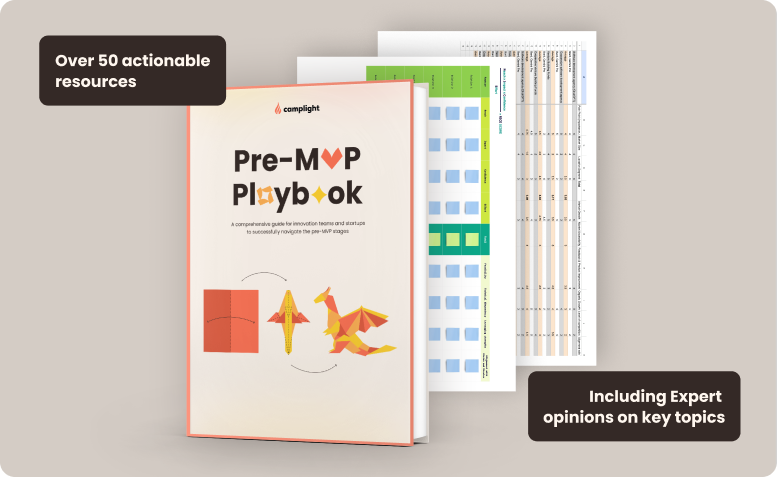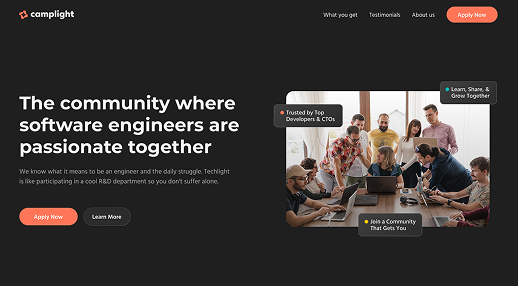Do you want to improve your project success chances with the staggering 37% out of thin air?
Start with exceptionally collaborative briefs! You have certainly heard of them, but do you know enough about their importance?
PMI found that 37% of project failures are due to a lack of clearly defined objectives and milestones. An additional 12% of project budgets are wasted due to inefficient brief creation and requirements gathering, according to PwC.
So, the chances are that 1 out of 4 projects that you’re involved in will fail because of early misalignment.
“A project brief is such a small piece of the overarching workstreams involved” you might say. What’s the value of a small brief in the complex scheme of things around software development?
Do you know the saying how a kingdom (our metaphor for a big project) can be lost because of a missing nail (a project brief)? Here it goes:
For want of a nail the shoe was lost.
For want of a shoe the horse was lost.
For want of a horse the rider was lost.
For want of a rider the message was lost.
For want of a message the battle was lost.
For want of a battle the kingdom was lost.
And all for the want of a horseshoe nail.
We have lost many projects and learned some hard lessons so we’re here to share them transparently, hopefully gaining your trust to not overlook your missing “nails”.
In this comprehensive guide, we will embark on a journey through the intricacies of creating a well-defined collaborative software development brief.
Whether you’re a seasoned project manager or a curious developer, join us as we demystify the art of fostering teamwork, refining communication, and ultimately, transforming brilliant ideas into functional codes.
The role of collaboration in software development briefs
Unlocking the power of collaboration in software development has become more essential than ever. As businesses strive to innovate and deliver cutting-edge solutions, the need for a seamless and transparent collaborative software development process has taken center stage.
There’s this famous quote by Henry Ford: “If everyone is moving forward together, then success takes care of itself”. In essence, teamwork transforms projects from disparate tasks into collaborative missions.
Collaboration is fueled by transparency and honesty. They are not just ethical principles, but crucial components of successful software development briefs. By providing clear and straightforward information, developers can ensure they accurately allocate their time and resources to deliver the best possible product.
For instance, Google developed its renowned Google Maps application with a clear brief outlining its vision: to make geographical information more accessible and useful to people worldwide. This focus steered their project, resulting in an application that millions rely on daily.
Spotify’s clear strategies for creating personalized playlists for users that were well-defined from the start are another example of the importance of a good brief at the start of the software development process. Features such as Discover Weekly and Daily Mix have been widely acclaimed and significantly contributed to the platform’s success.
Demonstrating transparency and honesty in briefs is also crucial in fostering trust among team members, stakeholders, and end-users. This includes sharing even the “ugly” stuff – missed deadlines, budget overages, unexpected hurdles.
No sugarcoating, no hiding facts. It is essential to address everything upfront. When everyone involved in the project is aware of the goals, challenges, and limitations, they are more likely to collaborate effectively and develop a strong sense of collective responsibility.
Ultimately, a culture of transparency and honesty is key to building a successful software development project that meets the needs of all stakeholders.
This is how collaboration thrives.
However, it’s not all sunshine and roses.
It is crucial to understand the nuances of transparency.
Transparency is generally beneficial, but it’s worth noting that it can have potential drawbacks if not managed prudently. Too much transparency can lead to an information overload, where the intricate details obscure the larger picture and confuse team members.
Secondly, it can inadvertently create a culture of micromanagement, as stakeholders may feel compelled to scrutinize every detail instead of focusing on the overall progress.
Furthermore, there’s a potential risk of disclosing sensitive information that could be detrimental if it falls into the wrong hands. Lastly, excessive transparency might create unrealistic expectations if all the minor setbacks and challenges are shared without appropriate context or solutions.
Consequently, a balanced approach to transparency is critical to ensure efficient collaboration and trust.
How to create a collaborative software development brief?
If you’re wondering how to create a collaborative software development brief, there are a few steps you should follow:
Project overview
Start by providing a high-level overview of the project. Describe the purpose and goal of the software. It’s essential to explain the problem the software aims to solve or the opportunity it wants to capture.
Background and context
You cannot expect trust without putting everything on the table. Offer relevant background information about your organization and your main business. Your partners need to know who they’ll be working with.
Objectives
Clearly articulating the objectives is paramount as it lays the foundation for a shared understanding among all stakeholders. They have to be action-oriented and inspirational to ensure a coherent effort and provide a guiding light throughout the development process.
Scope and deliverables
Clearly define the scope of the project. List the specific features and functionalities required. Don’t forget to specify the technical requirements. Detail the deliverables expected at the end of the development process.
Target audience
Identify the target audience and users of the software. Understand their needs and preferences. Our experience has shown us numerous times that understanding your target audience enables you to create a solution that resonates with your users, ultimately leading to a successful product.
Budget
Clearly state the budget allocated for the project. Mention any resource constraints or limitations. Be frank.
Risks
Identify potential risks. They could range from technical challenges, and budget overruns, to changes in market conditions or user preferences. By measuring risks beforehand, you can prepare contingency plans to navigate any obstacles that arise, ensuring the project stays on track.
Competitors
Understanding the competitive landscape enables you to differentiate your software, offering unique value propositions that meet the needs of the end-users more efficiently.
Additional information
Include any other relevant details that are specific to your project. That may be user stories, case studies, mockups… everything that could align your partners even more.
Success criteria
It’s vital to expand on the standards for success. Maybe you can incorporate testing phases into your brief. This is how everyone will manage their expectations about what it means to succeed.
Furthermore, considering the business model when setting success criteria helps prioritize features and functionalities that are essential to the business’s growth and sustainability. It prevents scope creep and misaligned expectations by emphasizing what truly matters from a business perspective.
Features that directly impact revenue generation, customer satisfaction, or operational efficiency can be given prominence, leading to a more streamlined and impactful development process.
By following these steps, you’re setting yourself up for a successful and collaborative kickoff. Here’s an example of a project brief we created BSW Wealth Tracker Project Brief. It got sliced and diced a couple of times until it reached a state suitable for unlocking future collaboration.
Common mistakes to avoid
A lack of specificity is one of the main pitfalls. A vague project brief can lead to misunderstandings and misalignment between your team and the development team. Be as clear and concise as possible. Keep in mind though that this is more like a rule of thumb, rather than an established principle for success. In agile methodology, for example, you cannot apply all that.
Another pitfall is neglecting to include external factors and timelines. This is crucial for managing expectations and ensuring that the team is aware of boundaries. Omitting this information can lead to wrong prioritization. In the typical software development dilemma of “Choose two of three: quality – cost – speed” prioritization has a key role.
The third pitfall is underestimating the importance of continuous communication around the brief. You craft it once but must create space for at least one feedback loop and consecutive edits.
Lastly, not accounting for success criteria in the project brief is a common mistake. Remember, software development is not just about coding. A successful software development life cycle is multifaceted and the benchmarks for success should be communicated.
For example, it might include rigorous testing (TDD) for the entire development process, saving you from potential reputational damage caused by a flawed product.
Conclusion
In conclusion, creating a transparent and comprehensive software development brief is a critical step in ensuring the successful completion of your project.
Trust, clarity, and effective communication are key components in translating your vision into a standout product that meets the needs of your users. Remember, the quality of your brief greatly influences the trajectory of your project.
A tip from us is to not overcomplicate your brief to become your project management system. A software development brief should be … brief. It should bootstrap your lean and agile processes, not stiffen them.
So, take the time to get it right, and you’ll be well on your way to creating software that truly delivers. If you found this guide beneficial, don’t forget to share it with others who might need to align. After all, the journey to a successful software project begins with a well-prepared brief.
Want to create your own software development brief? Why don’t you try our helpful builder Brieflight?






